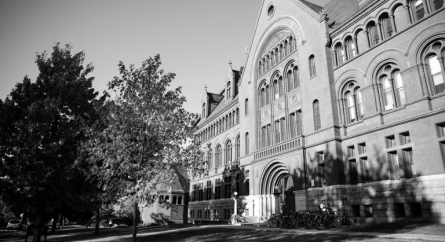Changing Requirements for Title VI Compliance?
Case resolutions released by the Department of Education’s Office for Civil Rights (“OCR”) in the past two weeks may be signaling a change in how OCR expects institutions of higher education to comply with Title VI’s mandate against discrimination and harassment based on race, color, and national origin. The three cases involved the CUNY system, the University of Michigan, and Lafayette College.
All three resolutions addressed instances of alleged discrimination or harassment based on students’ national origin (including shared ancestry) and found concerns that the various institutional responses did not sufficiently address any hostile environment under Title VI, even where the allegations involved protected speech.
In Dear Colleague letters issued earlier this year, OCR made clear that discrimination and harassment based on national origin, including actual or perceived ancestry and ethnic characteristics, is prohibited under Title VI, and that such conduct need not be directed at a specific person to create a hostile environment. The Dear Colleague letters also discussed institutions’ obligations to address hostile environments, even if they are caused by protected speech through methods such as student support, campus resources, and communications from the institution to their community and the public.
In these recent OCR case resolutions, while explicitly not binding or holding the force of law, OCR took this approach further by indicating an expectation that institutions consider whether speech has created a hostile environment even when the institution has concluded that the allegedly discriminatory or harassing speech may be protected speech.
With respect to CUNY – a public institution – OCR considered Hunter College’s response to student speech that occurred during an online Zoom class under Title VI. Hunter hired an outside law firm to investigate the allegations, and the investigation concluded that the speech that students engaged in during the Zoom class was upsetting for other students in the class, but it was also protected by the First Amendment. The law firm noted that, as a public institution, Hunter could not discipline students for exercising their rights to free speech. Accordingly, Hunter disciplined some faculty members for their participation in the incident and cautioned the students regarding class interruptions. OCR found this response to be inadequate because the investigators did not directly interview the students who were upset by the speech before concluding that it was protected and did not communicate directly with those students regardless of any disciplinary outcome.
With respect to the University of Michigan – another public institution – OCR considered Michigan’s response to student speech on private social media accounts under Title VI. OCR explained, “While the University may not discipline speakers for protected speech, the University retains a Title VI legal obligation to take other steps as necessary to ensure that no hostile environment based on shared ancestry persists.”
With respect to Lafayette College – a private institution – OCR clarified that, Lafayette’s actions of only providing supports to impacted students may not be enough of a response to students’ private online social media speech that is allegedly harassing. OCR faulted the College for not responding to allegations around students’ private online social media accounts in the same way that Lafayette had earlier responded to student speech at protests on campus.
It is clear from these three cases that only providing supports for students impacted by allegedly harassing content will likely be deemed an insufficient response under Title VI by OCR. Instead, OCR expects that institutions of higher education will undertake a consideration as to whether the allegedly harassing or discriminatory speech – occurring on or off campus – has an impact or creates a hostile environment on campus.
CLIENT TIP
Based on these resolutions, moving forward, institutions should be wary of dismissing reports of incidents on the grounds that the alleged harassment is protected speech or occurred off-campus without doing a robust assessment or an investigation as to whether such alleged conduct is creating a hostile environment on campus. It will be prudent for colleges and universities to have an explicit process for investigating such incidents—which may be similar to what many already have in place for Title IX allegations—and to apply that process to any allegations of discriminatory or harassing conduct based on race, color, or national origin (including shared ancestry) that come to the attention of institutional employees. To the extent that an institution uses a bias response team or student conduct to respond to such allegations, that team should be trained on the institutions process, the boundaries of free speech within the context of the institution, and how to assess whether there is a hostile environment alleged. Institutions also need to remember that if they find a hostile environment exists, the institution is required to implement measures to remedy such hostile environment, regardless of whether there is a disciplinary outcome.
With many institutions revising their policies to comply with the 2024 Title IX regulations, now may be a good time to consider combining Title IX policies and procedures with Title VI processes into a comprehensive set of non-discrimination policies and procedures. Please contact the Bowditch Higher Education team if you would like assistance in doing so.
Categorized: Discrimination, Title VI
Tagged In: discriminatory speech, harassing speech, hostile environment, national origin, shared ancestry, Title VI processes







